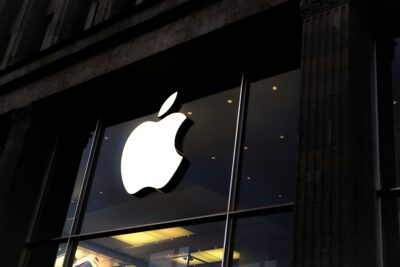
Retailer: What should you do in mobile?
A study into some facts and the opinions of a mobile & retail pro Mobile services might be the needed glue in the gap between the physical brick & mortar stores and e-commerce used on computers usually at home. It is a channel directly to the hand bags or pockets of the consumer. It […]
A study into some facts and the opinions of a mobile & retail pro
Mobile services might be the needed glue in the gap between the physical brick & mortar stores and e-commerce used on computers usually at home. It is a channel directly to the hand bags or pockets of the consumer.
It can be used for pre-buy activities, while in transit, on location, linking the selection process in the store with the e-commerce site, at the point of purchase for paying or using coupons etc. and for communicating with the customer post-purchase.
[su_quote]A mobile shopper spends six times more than the average store-only shopper[/su_quote]
American retailer Walgreens recently announced that the average in-store, online and mobile shopper spends six times more than the average store-only shopper.
These opportunities are a hot topic for many retailers at the moment, so I decided to gather all the information I have on the subject in to a blog post. Hoping it will help you with your plans in using mobile the best way it can be used for retail.
What do customers want?
Smooth user experience is a key factor for the small screens. Too much functionalities will confuse them and too little mobile specific interface planning will annoy them.
If you make your mobile service have the same stuff your website has, they will think you’ve done nothing for them in mobile.
If we take a look at the simplest mobile services around the world, they may not be the right service for all, but same key ingredients could be used in retail as well. Shazam is a hugely successful “one button” app for music and Guatemalan Meatpack embodies the little crazy ideas for mobile with a cheeky service to capture customers from competitors. Case can be seen in my retail benchmarks Slideshare.
A new study from Deloitte Digital finds that stores are pouring their money into m-commerce sites that don’t appeal to shoppers.
Service that will make their lives easier. Most people value their time and any service that will either save their time or make their time enjoyable will be well received. If you look at the most successful mobile services at the moment, you will find that that is exactly what they do.
Uber lets you get in and out of you taxi faster and with less effort than ever before, Macy’s, Target and other American retailers have their loyalty cards now as mobile apps, so there is no need to carry your plastic one or any paper coupons. They are all on you phone. As well as store maps, customer service and other shopping aids.
U.S. based Walmart has just launched an order and pick-up service, which addresses these key trends. “The app provides convenience, in that people hate lines, recognizes that smartphones have become more readily able to capitalize on quick service and values the collection of data and what it provides back to retailers.”
Personalization can be done very easily with mobile services. The devices are personal, always with and service specific entry passwords are usually not needed, or can be remembered by the device.
What’s happened in the last 5 years with the rise of smart phones is that consumers are used to being able to personalize their phones. It’s done by all of us with the features and apps we would like to use, covers, background pictures etc. Not one phone is the same as the next one.
Even your news feed can be personalized (for example with Finnish Uutisvahti app) and not just by using the hyped Big Data, but by the users themselves.
Starbucks app saves your favorite beverages and you can grab one on the go from a Starbucks near by with the tap of a few buttons on your phone. Uber lets you choose the kind of car you’d like to travel in and most retail chains have a mobile loyalty platform that uses the information of your previous shopping to push-message you with more targeted advertising.
What can you do with mobile to give them that?
[su_quote]82% say it’s important to be able to place an online order while shopping in the store[/su_quote]
Think of your customers’ mobile phones as a new member of you shop floor sales personnel. How can you serve your customers in a new way through their smart phones with a smooth user experience that saves their (and your) time and is personal to them?
How many times a day does a customer walk away from your store when the replenishment of the shelves has not been ideal? Do they go home to find the item online from you or some other retailer or do they go to the shop next door? Or do they just forget about it and the potential sale is lost?
Items that are not currently on you shop floor could be available via mobile, so when the right size, color or product is not available in the brick & mortar shop, the customer is still served instantly.
“82% say it’s important to be able to place an online order while shopping in the store, according to a survey by CFI Group and eBay Enterprise.”
Many wives send their husbands to do the grocery shopping with a shopping list. Your mobile service could guide how to get to them in the store, plus maybe suggest some additional products based on that.
A Staples executive speaking at the Mcommerce Summit: State of Mobile Commerce 2014 said the retailer sees a bigger opportunity with leveraging beacons and other mobile location technologies for enhancing the in-store experience as opposed to delivering marketing.
Orders could be placed and paid via mobile, suggestions maybe helped by some big data and all your customer has to do is to pick them up or even have delivered at home.
Loyalty offers and coupons are traditionally sent by post or e-mail, reaching the customer usually at home. With mobile you can reach them on the go, in the shop and make sure they always have the loyalty advantages at hand.
A study shows the majority of shoppers would stop their searches and purchase immediately if offered a dynamic-price rebate on the location via mobile. (https://m.chainstoreage.com/article/omni-channel-shopping-means-retailers-must-move-faster-ever).
Customer service could also be available via mobile chat while in or out of the store, advice could also be pre-written for most commonly asked in-store questions and “these items go well with your chosen product” tips would be easy to include for some additional sales.
Sears recently launched a loyalty-club program called “Get Advice” that enables consumers, either via their personal computers or mobile devices, to seek and gain answers from store associates about potential purchases and product details.
Combine your thoughts on the services provided in the best e-commerce sites with service needs on the shop floor. Mobile is your tool for that.
Some 78% of local searches conducted on a mobile phone result in a purchase, and 73% of those purchases are made in-store, according to the 2014 Local Search Study.
[su_quote]78% of local searches conducted on a mobile phone result in a purchase, and 73% of those purchases are made in-store[/su_quote]
Examples of well received Retail Apps can be seen in this Slideshare.
Ok, then the technological questions.
HTML5 or native? Which platform: iOS, Android or Windows Phone?
Most successful retail apps in the U.S. are either native iOS (Apple) or native Android (Samsung etc.), but for example in Finland with either platform you’ll cover only about 30% of the total Finnish market. HTML5 would cover more smart phones/consumers, but still lacks in user experience and usage possibilities. In either case you should plan your service first and then choose the technology that best suits your needs. Not vice versa.
What about our existing systems, how do they integrate? CMS, PMS, CRM, EMM, SAP – some are from the eighties. Oh no!
Yes, most likely you will have to do something with them to make them communicate with your mobile service. But don’t make the mistake of doing that first! First plan your mobile service, plan how it will be a success among your customers, make your business grow and pilot test it first with hopefully no integrations or at least very little.
All of your existing systems can be fixed to work with your mobile service according to your strategic desire. Just don’t do what one e-commerce site did and waste over 40 million euros on technical development before launch and then fail. Someone said in a recent seminar I visited, that “Spend the amount on mobile now that you wish you had spent on web ten years ago”. This may include revamping some of your existing backend systems.
[su_quote]Spend the amount on mobile now that you wish you had spent on web ten years ago[/su_quote]
What about the human and business processes?
I can see that in many cases there are also often human and process issues on the way of creating successful mobile services. There are franchising partners, co-ops, different pricing policies in the same chain, sales staff bonuses for in-store sales etc. on the way.
These are management decisions. Do you want your business to succeed in the future or do you want to stay doing how you used to do it in the past? Are these processes or operating systems worth their while or is it time to break them up and embrace the omni channel world?
Do not leave these decisions to be made by your IT or marketing department? They can’t change these companywide processes and will most likely end up making something thin and flimsy or in the worst case they will do nothing mobile at all because it’s too difficult.
Are these processes or operating systems worth their while or is it time to break them up and embrace the omni channel world?
So how to start embracing the mobile channel?
- Hire someone to lead the project. Preferably someone who has background in service design not necessarily IT. You are after all creating a new service channel, not a new technological device.
- Brainstorm with your team. Invite marketing, sales, IT, business development and maybe even some customers. Take along a mobile business consultant, who will be able to answer occurring questions and maybe feed the ideas with expertise in the field of mobile services.
- Plan your dream mobile service. Then split the development process in to parts that can be executed in three months. Anything longer than that is taking too long or too ambitious.
- Give a mandate to you mobile project manager to hire the best companies in the fields of mobile UX, mobile coding, backend integrations and marketing (internal and external). This most likely will not be available in one company as the field of mobile is new, so go with the ones with the most innovative yet trustworthy approach.
So, are you going to be ready by next Christmas shopping season?
[su_quote]Studies show that more than half (53 percent) of shoppers who own smartphones and nearly two-thirds (64 percent) of those who own tablets used their devices to research and purchase holiday gifts.[/su_quote]
If you’re intrested in reading more on the subject a large package of mobile data can be found in the Mobile Commerce Daily Outlook 2014.
The writer of this blog post is a Sales Manager at a mobile service consultancy, with vast past experience in service design, retail & wholesale management.

